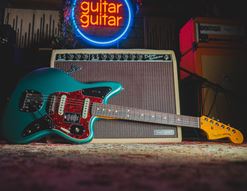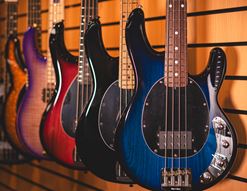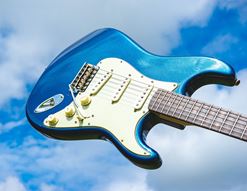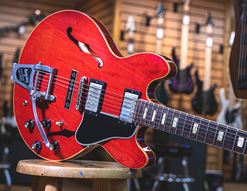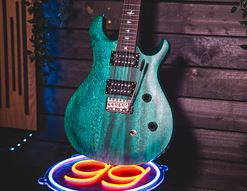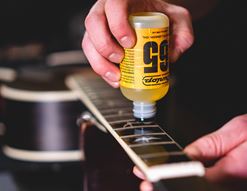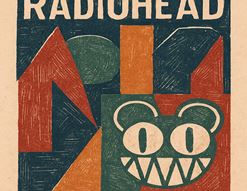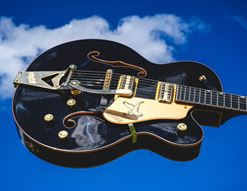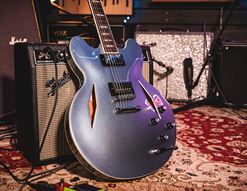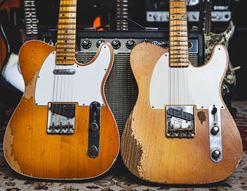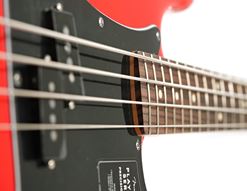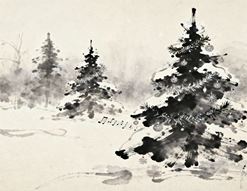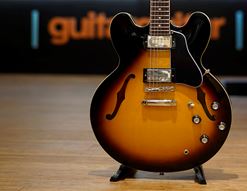How many famous guitar companies also have a super-famous pedal to their name? Fender are almost there with the Blender Fuzz, but Gibson’s efforts are either lost to time or released under a different name (Maestro, for example). Are there any others?
No, there really is only one guitar builder with a pedal that’s at least as popular as their instruments.
It’s Ibanez of course, and the pedal I’m referred to is the Tube Screamer. It’s so well-known that it is actually a whole subgenre of pedal. It has become bigger than a mere overdrive pedal, despite that being all it's even been!
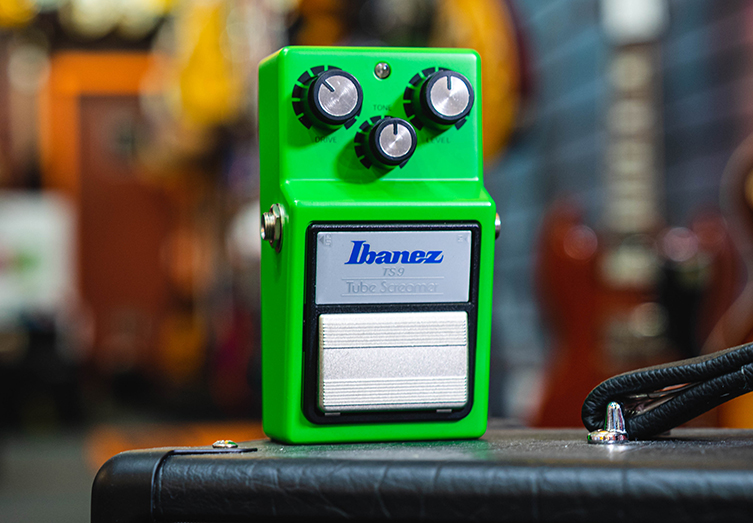
I’ll talk all about the Tube Screamer and its multitude of variants today, and I’ll also take a look at some of the other Ibanez pedals that have been released over the years. Outside of the Tube Screamer, Ibanez have offered a wide range of units that have enjoyed a sort of cult collectibility over the years. I’ll delve a little into the history and check out some notable bits and pieces from over the years, as well as highlighting tasty pieces that are available right now. Though not exhaustive or comprehensive, today’s blog will hopefully shine some light onto this fun and fascinating subject.
Contents
The Early Days
Ibanez’s parent company is Hoshino Gakki. In 1974, Hoshino Gakki signed a distribution deal with Nisshin Onpa Factory, a company who boxed Maxon effects pedals. Nisshin Onpa also sold unbranded versions of Maxon pedals to companies like Aria Pro and Greco, so if you see any of these out in the wild for a good price, snap them up sharpish!
Maxon have gone back to producing their own branded pedals for the last few decades, and so it’s worth knowing that in reality, their green overdrive pedals are one and the same as the Ibanez TS models that are so popular.
In this early mid 70s era, Ibanez released the ‘Narrow box’ series, which included pedals with names like the Phase Tone the Compressor II, and the famous OD850 Overdrive. These are very collectible, and have a ‘round switch’: a standard pedal footswitch that is in normal use throughout the pedal market today.
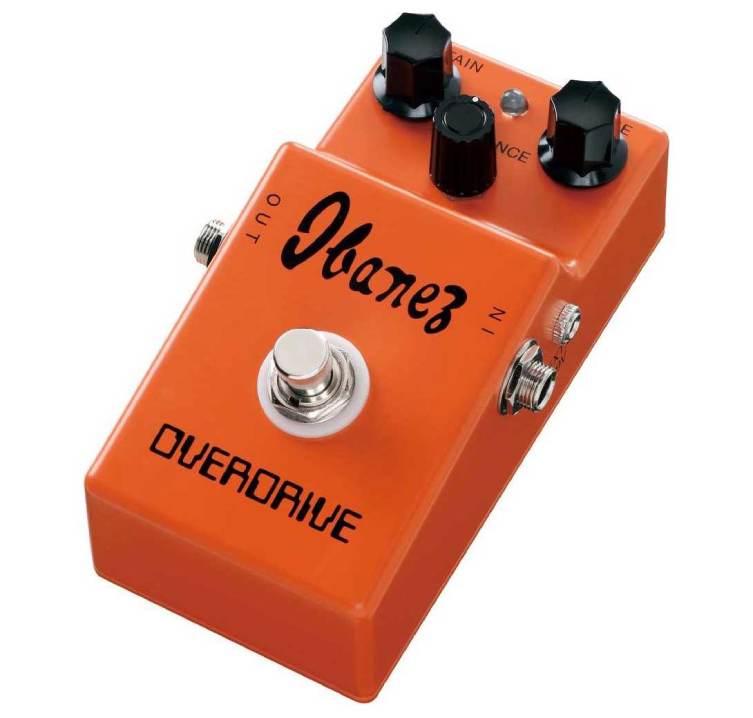
Then came the ‘square box’ series, and this is where fans will recognise the distinctive look of the TS-808 Tube Screamer. There was also the AD-80 Analog Delay, another hit that is reissued often, as you’ll see later in the blog. These were basically Ibanez’s answer to the BOSS compact effects that were dominating the guitar world at the time, and they’ve become well loved as vintage units.

Other classics from the seventies include the ‘Flying Pan’ phaser, which had stereo outs for a panning effect. This is indicative of the bigger boxed pedals that were released alongside the more compact ‘narrow box series’. Ibanez have periodically revived these vintage-style pedals in more recent years, and also used them as inspiration for retro-themed new pedals such as the very cool AF2 ‘Airplane Flanger’ for Paul Gilbert.
One excellent pedal that I did come across when searching through old Ibanez catalogues was the EA-26 Wau Wau Fuzz from 1974. That is not a typo, by the way: ‘wau wau’ is how Ibanez named this wah-fuzz effect, and I really hope a reissue is on the way because this is super-cool!
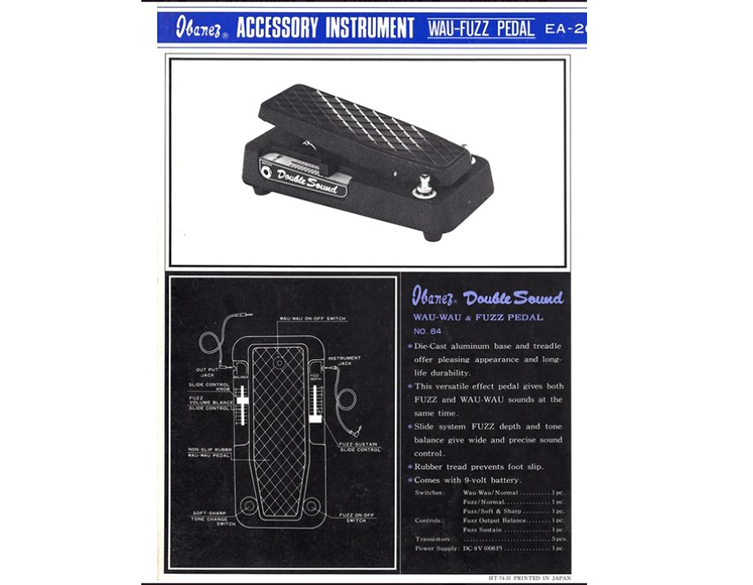
Tube Screamers
The Tube Screamer is undoubtedly the most well-known and loved of all Ibanez pedals. It’s an overdrive pedal and there are a couple of reasons why it is considered valuable to players:
- It gives a pleasing, natural sounding overdrive tone when used in front of a clean amp.
- When used with an already distorted amp, the Tube Screamer tightens up the tone by adding a distinct midrange ‘hump’ and slightly cutting the low end.
- Top-tier high gain tones tend to have a Tube Screamer ‘in front’ of the amp’s own preamp, with the pedal’s gain all the way off, and the tone and volume dimed.
- The Tubescreamer just has a sound that works well in every situation, and has proven to be extremely valuable to guitarists. As such, it’s very widely copied, and as mentioned, it’s thought of as a whole style of pedal on its own.
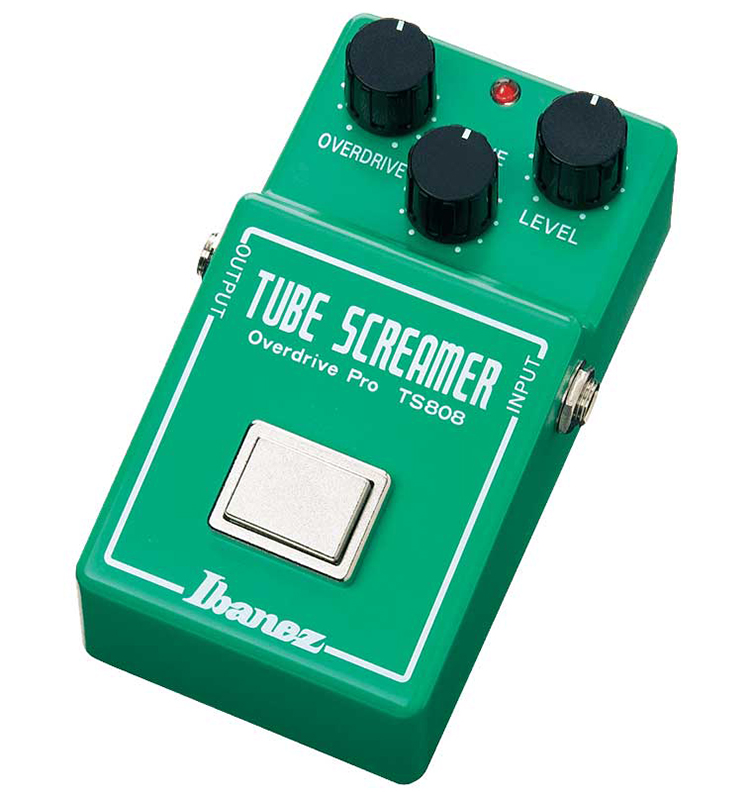
There are a few variations to the Tube Screamer design, so here’s a partial rundown (ignoring anniversary models that simply change the paint job on the chassis)...
- OD & OD-II: the direct precursor to the Tube Screamer, with orange and reddish housing.
- TS-808: the original Tube Screamer, released in 1979. This features one of two similar (highly prized) chips in the circuit: the Japanese JRC-4558 or the Malaysian RC4558P. The pedal’s button is square and it is about as classic as it gets.
- TS9: Released initially from late 1981 until 1985, the TS9 initially used the same chips as the TS808 but later moved to a wide variety of op-amp circuitry. (I should note that op-amp - or ‘operator amplifier’ - circuitry is normal for all Tubescreamer pedals) In shorthand, the TS9 is known to be brighter and ever-so-slightly harsher than the 808.
- TS10: from 1985, this model - from the Power Series - was the TS model available, with some significant changes made to the original circuit. It has a higher gain level, and is maybe not as revered as the classic TS808 and TS9 models.
- TS5: this version has a plastic chassis but otherwise has a very similar/same circuit to the TS9.
- TS7: From the Tone-Lok series, which I talk about below. This version had a ‘hot’ switch for more gain, and had a circuit that included the fabled JRC4558D chip.
- TS808HW: Hand wired with specially selected chips, this premium take on the 808 also features True-Bypass, a feature that is not normally included with TS units.
- TS9B: A Tube Screamer for bassists!
The Master Series
Some of the most well-remembered Ibanez pedals formed the Master Series. Also known as the ‘L series’, these had large and distinctive rectangular footswitches that were positioned in the corner of the pedal rather than in a more symmetrical area.

The DCL Digital Stereo Chorus is particularly collectable (bands like Drab Majesty love it) but there around 17 or 18 pedals in the full range, including three choruses and two fully dedicated to metal (the MSL Metal Screamer and the SML Super Metal). John Scofield was a fan!
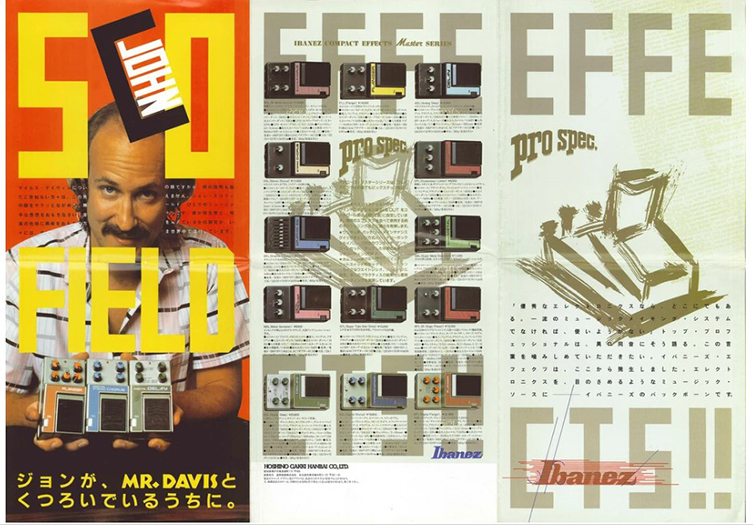
The Master/L series were made by Maxon in the mid-80s.
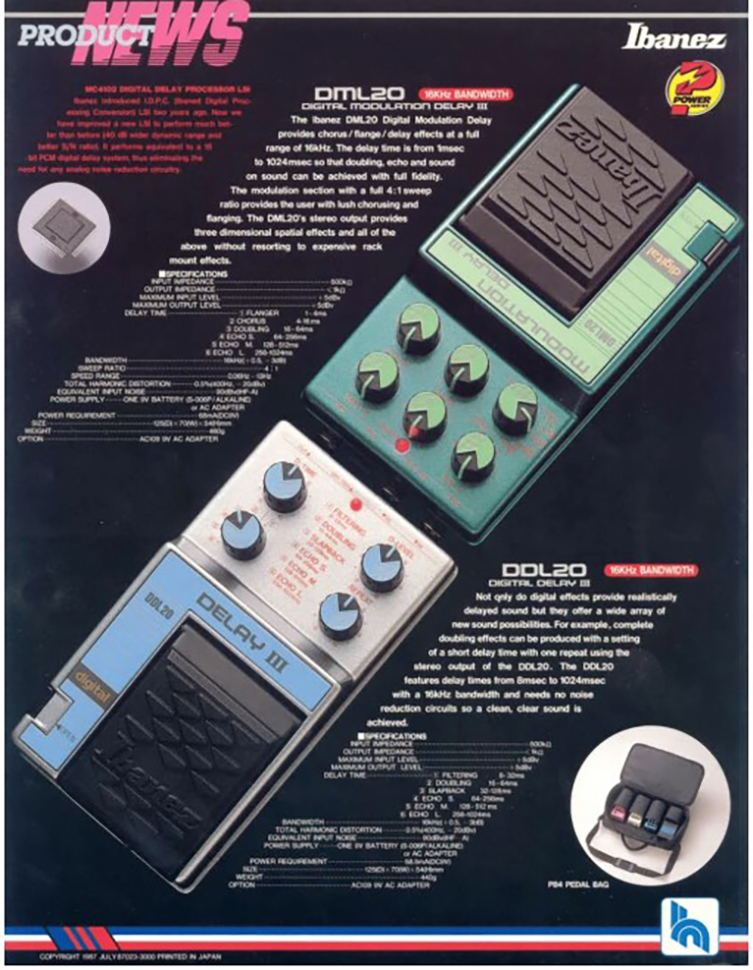
Tone-Lok
The Nu-Metal late 90s scene redesigned the notion of heavy guitar sounds, with extended range guitars taking the cultural lead for the first time. Ibanez threw their hat into the ring with the SM7 Smash Box, a next-gen distortion pedal from their Tone-Lok range of stompers.
The Tone-Lok pedals earned their name by featuring control knobs that could be pushed down into the pedal’s body where they’d remain safely out of your boots’ way, and could be pressed again to resurface. Like many good ideas, it’s a simple notion but it worked well!
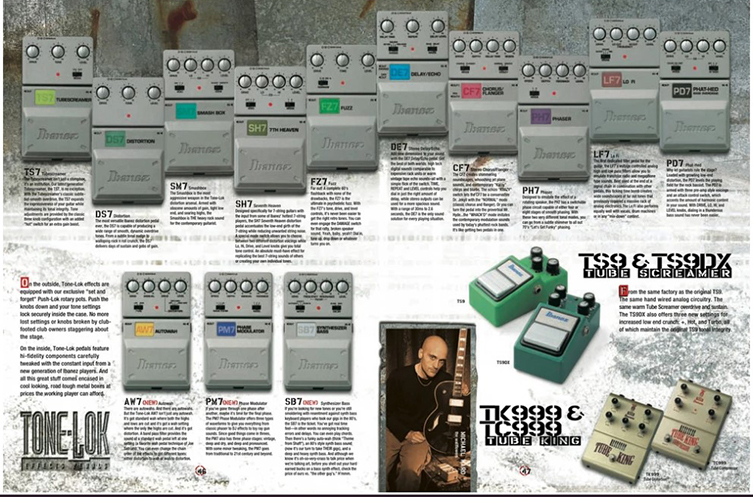
The Tone-Lok range featured a wide range of effects (see the catalogue image), but the one I always remember from my Guitar World-reading teenage days was the aforementioned Smash Box. A gnarly distortion, it was promoted in adverts by Korn’s Head & Munky, and was actually pretty interesting, design-wise. Check this out: the circuit apparently had the input stage of a Big Muff, the overdrive of a Tube Screamer and the clipping section of an MXR Distortion+! Then there was the built-in noise gate, labelled ‘VOID’ on the pedal. Not exactly subtle, but then Nu-Metal wasn’t, was it?
Mini Pedals
Recent years have been mostly about reissuing classic takes on the TS808, TS9 and the AD80 Analog Delay. This is all fine, since there is always a demand for classic pedals, but Ibanez are always good at picking up on trends, too. The current trend in pedal markets is to offer mini or ‘nano’ pedals, which are pint-sized takes on (normally) well known effects with streamlined controls, no battery power (too much size required) and a footprint that does not take up much pedalboard real-estate. This means that players can either downsize their boards, or they can fit more pedals onto their existing boards.
I know which way I’d go!
There’s a large selection of Ibanez mini pedals, including the expected Tube Screamer and analog delay, but also including flanger and chorus circuits based on classic historical Ibanez pedals. The sounds are easily comparable to valuable classics, too, so if you are an Ibanez FX enthusiast, these mini pedals may be a great shout for you: take these to the gig and leave your rare originals at home!
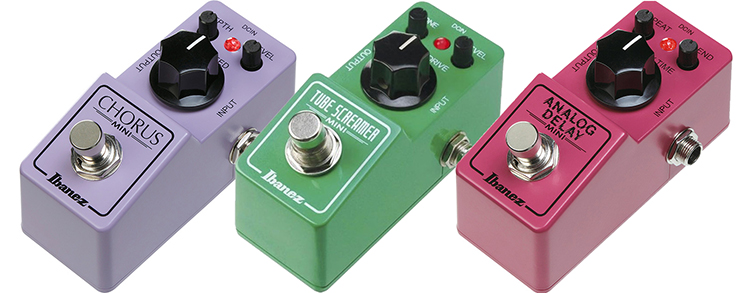
Ibanez mini pedals are available in a number of guises:
Collectable and Influential
Although the Tube Screamer is undoubtedly the shorthand reference for most when it comes to Ibanez pedals, hopefully this short blog has introduced you to some other alleyways that you can travel down to find cool stuff. Ibanez are always an interesting brand to research, collect and use, because there’s a nice long history of products with some obscure bits and pieces in there. Vintage pedals will only ever become rarer and more sought after, so now is a good time to hunt down what you can.
And for players, the mini pedals and other reissues are pedalboard essentials. Ibanez is involved with some of the most incredible guitar tones in existence: time to add some of that magic to your sound!
Click to View our Ibanez Effects Pedals

